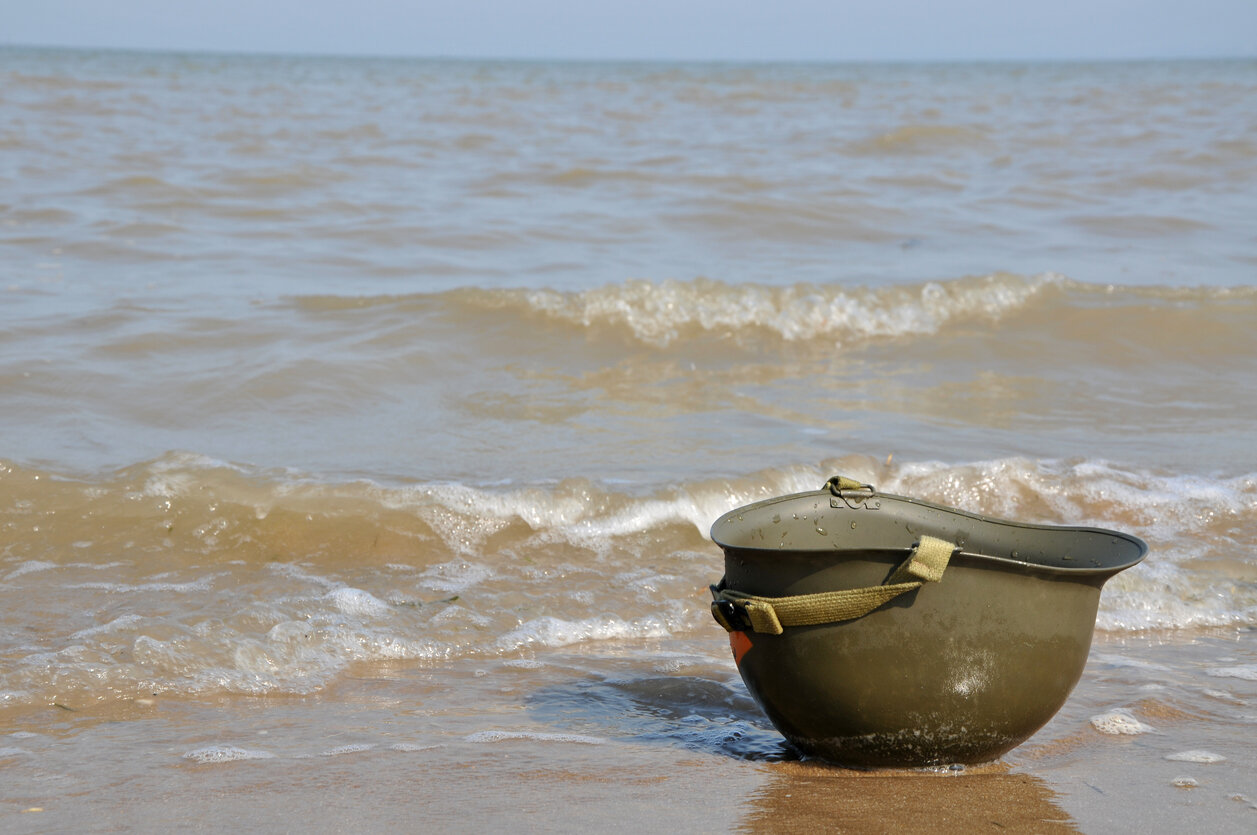Hautes-Alpes, Charente-Maritime, Drôme… shells, bombs and other munitions dating from the Second World War are regularly the subject of mine clearance operations, even eight decades after the Armistice of May 1945.
“We are not at the end of our troubles. There are still 3 centuries of material of this type remaining according to deminers,” points out Vincent Carpentier, archaeologist at the National Institute for Preventive Archaeological Research (Inrap) and member of the Michel de Boüard center (CNRS-University of Caen).
The teacher-researcher interviewed for Planet.fr warns the public against finds dating from this period. “It is a poisonous heritage, because many of these shells but also these artillery elements, these bombs, these mines” dating from the Second but also the First World War, composed of chemical elements, can still injure or kill .
“In Normandy, particularly near Caen, bombings reached levels never before reached in the history of humanity,” he recalls. Added to this are the “millions of mines laid” to protect the Atlantic Wall, the German fortification reinforced by Edwin Rommel at the end of the conflict, which from Finland to Spain was supposed to protect the Reich and its territories conquered.
Added to this is the fact that the munitions produced at the end of the war often turned out to be defective, due to lack of quality control; Hence the stories of soldiers talking about bombs falling without exploding, and which we sometimes find during a renovation project, or in the event of preventive excavations.
“Not a year goes by without coming across artillery pieces, ammunition, etc.,” explains the researcher who has been working for around thirty years. “As archaeologists, we are trained to identify them, but there are always necessary security measures,” recalls Vincent Carpentier. In the event of a discovery in your garden, garage or attic, you should definitely not touch the object in question, and notify the police or gendarmerie who will contact the prefecture services responsible for mine clearance.
Bombs and other grenades are not the only potentially dangerous remnants of war. On one of the D-Day beaches, says the archaeologist, a gentleman found a pink block on the beach, it was a phosphorus cake which was used to ‘code’ the beaches. He put some in his pockets and on these hands. However, it becomes active on contact with air, he suffered some burns.” Situations can turn out to be much more tragic, like this person who died after throwing a bag of ammunition from the Second World War into the fire.
Far from being rare, this type of discovery also attracts a good number of history lovers and even collectors, fans of more or less legal trafficking. “People think they know, but they are more or less well informed in reality,” underlines the archaeologist. The movement of historical objects can also disrupt the work of researchers who, to date what they find, need to know the context in which they were found.
And this context is not trivial. This is how, by studying the theaters of operations of the Second World War, Vincent Carpentier and his colleagues are helping to demystify a certain “vision of war”, inherited in particular from Hollywood films. Enough to better understand the behavior of soldiers during the war to place them in their context.
It is thus an “archeology of trash cans” which has made it possible to better understand the phenomena of alcoholism among the military. “The Americans were coming out of prohibition, they tolerated alcohol less well than the British or the Belgians. So when they came across calvados, it was a disaster,” explains the scientist. This situation helped to explain the waves of violence, particularly sexual, perpetrated in Normandy. “We are not remaking the history of the conflict, it is already written. We come to enrich it,” concludes the archaeologist.


















